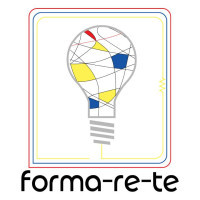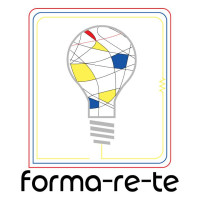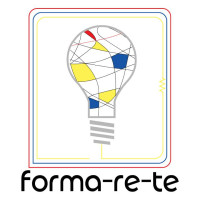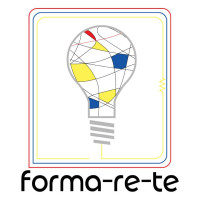Mobile Lab Kit for Training in Communication Protocols
5 Enrollments Level : AdvancedRelevance
This specially developed suitcase contains a comprehensive set of devices and components
essential for conducting hands-on training sessions. The goal is to facilitate the creation of
mobile laboratories that can be easily transported and set up in various educational settings.
With the Mobile Lab Kit, students will be able to engage directly with the technologies they are
studying, reinforcing theoretical knowledge through practical application. Each kit is equipped
with real, functional systems aligned with the training modules offered by P4ELECS, ensuring
consistency and relevance to the program’s learning objectives.
By bringing technology directly to the learners, the Mobile Lab Kit supports a flexible and
immersive training approach—one that bridges the gap between classroom instruction and
real-world application.
We believe this tool will greatly enhance the effectiveness of our vocational education efforts
and look forward to seeing the positive impact it will have on both learners and educators.
Please find here below descrition of the devices installed.
Abstract
Using a “digital multimeter tester” students can understand the common elements and
concepts about automation in general (Smart & Building Automation, Industrial Automation).
FUNDAMENTALS
- Digital Input/Output (on/off status and command on/off)
- Analog Input/Output (temperature sensors, lighting sensors and so on).
- Difference between passive and active sensors.
- AC/DC power and devices.
Learning Outcomes
Using a “digital multimeter tester” students can understand the common elements and
concepts about automation in general (Smart & Building Automation, Industrial Automation).
FUNDAMENTALS
- Digital Input/Output (on/off status and command on/off)
- Analog Input/Output (temperature sensors, lighting sensors and so on).
- Difference between passive and active sensors.
- AC/DC power and devices.
Prior Knowledge
Fundamentals of Electrical Engineering and Automation
AC/DC principles, power calculations, circuit protection
Operation of components: relays, contactors, timers
Architecture and Principles of the KNX System
Topologies: line, tree, backbone, area
Communication media: TP (twisted pair), IP, RF
PLC Operation Basics
Scan cycle: input reading, logic processing, output update
Logical and state-based programming
Concepts of memory, addressing, timing
Device configuration
Assignment of physical and group addresses
PLC Programming Languages
Ladder Diagram (LD)
Structured Text (ST)
Function Block Diagram (FBD)
Familiarity with IEC 61131-3 standard
Interfacing and Integration
Data exchange between PLCs and KNX devices
Use of IP/TP interfaces, gateways (e.g., Modbus-KNX, BACnet-KNX)
Mixed logic configuration (PLC + KNX)
Wiring and Commissioning
Physical installation and bus cabling
Hardware troubleshooting and diagnostics
Maintenance and Debugging
Use of ETS for monitoring and diagnostics
Telegram analysis, address and topology troubleshooting
📚 Standards and Certifications
Knowledge of UNI EN ISO 52120-1
European standards for building automation
Understanding roles: BACS Expert vs System Integrator
KNX Partner Certification (recommended)
Official KNX training courses
Recognized certification for professional KNX integrators
Cybersecurity for KNX/IP Systems
Network protection and segmentation
Secure remote access configurations
Integration with Smart Home Systems
Mobile apps and voice control (e.g., Alexa, Google Home)
Visualization via touch panels or KNX servers
Keywords
- AC DC power and devices
- Blue print lab setup
- Digital Input Output
- Analog Input Output
- passive and active sensors
Elements
1. About this Building Block
Descriptor
Description of the Lab Tech Setup (At the moment that is Working Progress BB)
Suggested Building Block
-

UNI EN ISO 52120-1
5 EnrollmentsThis module introduces the UNI EN ISO 52120-1:2022 standard, focusing on how Building Automation and Control Systems (BACS) and Technical Building Management (TBM) contribute to the energy performance of buildings. The content includes the classification of BACS into energy performance classes (A to D), minimum functional requirements, and compliance criteria based on EPBD 2018/844. Learners will explore technical capabilities such as individual room control, time scheduling, and weather compensation, and understand how these functionalities impact energy savings, CO₂ reduction, and user comfort. The module also presents application guidelines and real-case assessments to support the technical and economic feasibility of BACS implementation.
-

MQTT - Fundamentals and Architecture
6 EnrollmentsMQTT (Message Queuing Telemetry Transport) is a lightweight, efficient protocol designed specifically for resource-constrained
devices and unreliable networks, prevalent in the IoT (Internet of Things) ecosystem. This course covers MQTT’s fundamental
concepts, including its publish/subscribe architecture, detailed message types, and critical message properties such as Quality of
Service (QoS)and the Last Will and Testament (LWT).
MQTT plays a crucial role in smart home and building automation due to its inherent advantages, such as minimal bandwidth usage,
scalability, reliability, and real-time communication capabilities.
This three-part training series provides a comprehensive introduction to the MQTT protocol, a lightweight and efficient communication
standard widely used in IoT and distributed automation systems.
Part 01 – Fundamentals and Architecture
The first module introduces MQTT's origin, purpose, and core design principles. It explains the client-broker architecture based
on the publish/subscribe (pub/sub) model and emphasizes its advantages in low-bandwidth and high-latency environments. Key
decoupling concepts (space, time, and synchronization) are discussed to highlight the scalability and flexibility of MQTT.
-

Communication Network Architecture and Protocols
8 EnrollmentsThis module introduces the fundamental principles of network architecture and communication protocols, providing students with the essential knowledge to understand, analyze, and operate computer networks. The course begins by exploring the differ-ent types of networks—Personal Area Networks (PAN), Local Area Networks (LAN), Metropolitan Area Networks (MAN), and Wide Area Networks (WAN)—with a focus on their scope, technologies, and applications.
Students will become familiar with the ISO/OSI reference model and the TCP/IP protocol suite, learning how data moves through the various layers, from the physical transmission medium to the application level. Key concepts include addressing schemes (MAC and IP), data encapsulation, routing, switching, and session management. The role of essential network devices—such as routers, switches, and access points—is discussed alongside transmission media like copper cabling, fiber optics, and wireless technologies (Wi-Fi, Bluetooth, cellular).
Hands-on activities and scenario-based exercises help students identify network configurations, recognize typical network de-vices in real environments, and understand the flow of data within interconnected systems. By completing this module, learners will be able to describe and troubleshoot basic network infrastructures and will be well-prepared to progress toward more ad-vanced topics in networking, cybersecurity, and intelligent systems.
-

Alternating Current
7 EnrollmentsThis module provides a comprehensive introduction to the principles and applications of alternating current (AC), a fundamental topic in electrical engineering. Starting from the definition of AC as a time-varying electric current that reverses direction periodi-cally, the module explores the mathematical representation of sinusoidal waveforms, including amplitude, angular frequency, phase, and period. Students learn how to apply key relationships between frequency, period, and angular frequency, and gain experience through solved examples involving practical components and measuring instruments.
The module examines the behavior of ideal components—resistors, capacitors, and inductors—under AC excitation, focusing on voltage-current phase relationships and power dissipation. It introduces concepts such as instantaneous power, average (active) power, and reactive power, and explains the significance of root mean square (RMS) values in AC analysis. A dedicated section covers the use of phasors and complex numbers to simplify the solution of AC circuits, preparing students for more advanced circuit analysis.
Finally, the content highlights the importance of AC in real-world systems, including electric motors, power grids, and smart home technologies. By mastering these foundational concepts, students will be equipped to understand and design efficient, safe, and intelligent electrical systems based on alternating current.
